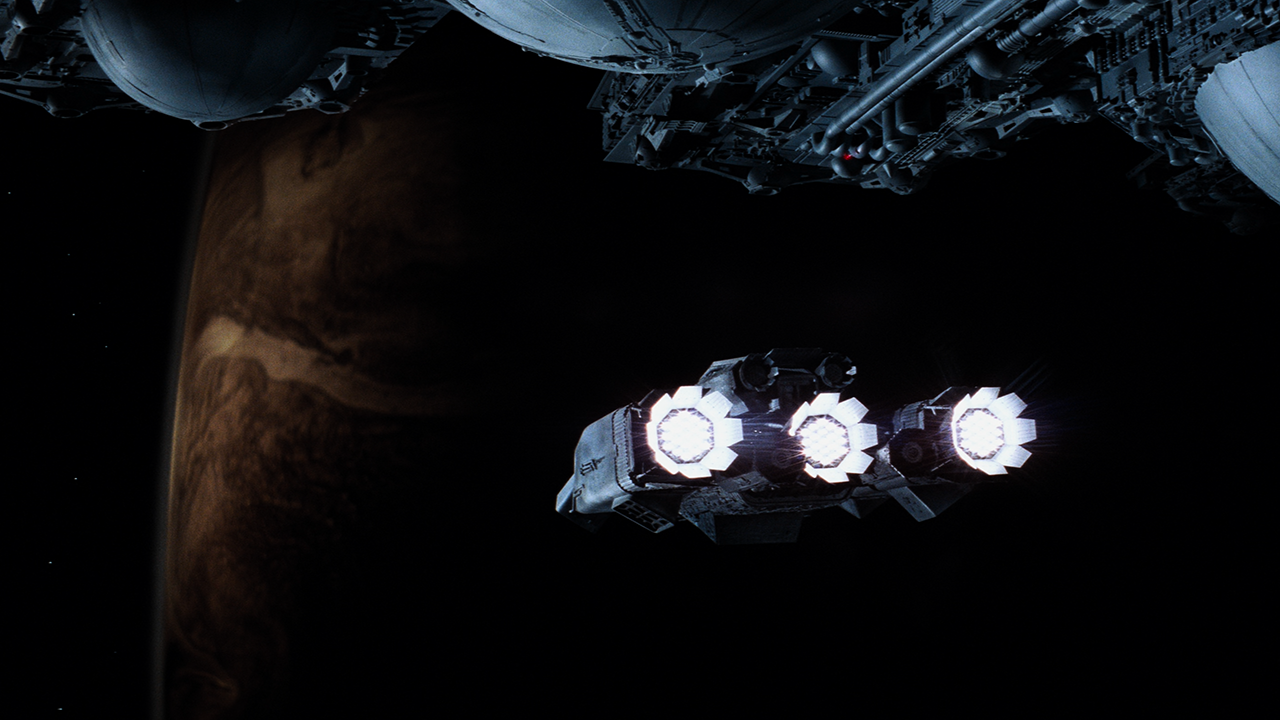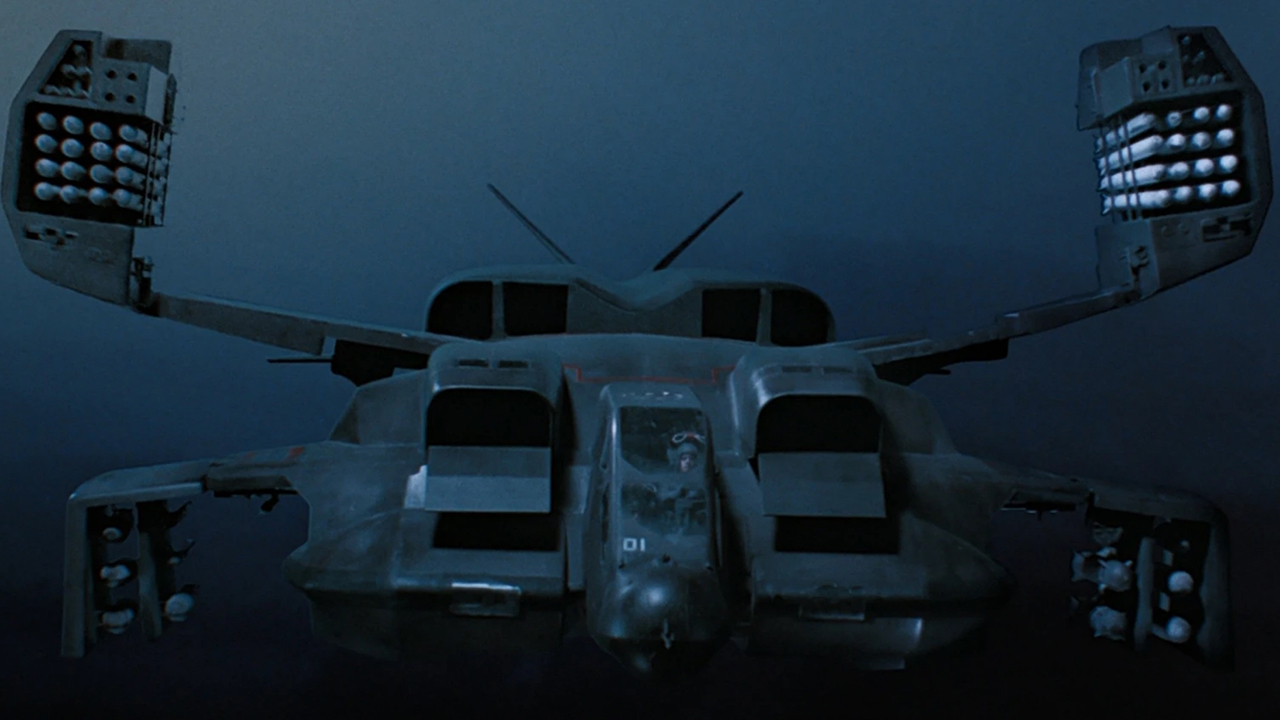
We can’t wait for Alien: Romulus, which aims to strike a delicate balance between the horror thrills of the original 1979 movie and James Cameron’s action-heavy sequel. If you’re in the mood to get back into the iconic sci-fi universe ahead of Romulus, maybe you’ll enjoy this look at the series’ most impressive ships.
The Alien movie franchise (soon to be joined by an Alien TV series) is quite weird in that no two installments are the same, with each director and set of writers bringing their own sensibility to not just the creature, but also the universe surrounding it. However, there are some constants, including all the amazing work that goes into making the tech and spaceships as believable and memorable as possible. The outlier here might be Alien 3, which had a noticeably smaller scale and mostly was set inside an underground prison.
Whether you’re a newcomer to the Alien franchise or someone looking to get a full refresh before returning to theaters this summer, we recommend looking at our Alien movies in order and Alien movies ranked, worst to best lists to maybe reevaluate the legendary sci-fi horror series and learn a thing or two. Perhaps more revealing will be our best Alien games of all time picks, which might make you scream even louder.
USCSS Prometheus

Weyland Corp’s USCSS Prometheus is easily among the series’ coolest and most impressive ships, not just because of its imposing yet stylish figure, but also due to its more advanced equipment to support the scientific mission sent to LV-223 in 2091. Despite this, it arrived at the uncharted moon in 2093 and was destroyed only a few days later.
The Heliades-class J scientific exploratory vessel was built and operated exclusively by Weyland Corp, and at the time of its first launch, it was a cutting-edge starship with the most advanced faster-than-light capabilities to date. The ship’s most iconic element is the four nuclear-powered ion plasma engines with VTOL capabilities. It carried several scientists, crew members, and mercenaries. Additionally, over 20 vehicles were contained inside its huge garage hangar. Other key rooms and equipment included hypersleep chambers, crew escape modules and ejection pods, an advanced MedPod that could easily be utilized by any crew member, and long-range comm antennas similar to that of the USCSS Nostromo.
There’s been some debate over the years about the ship’s strikingly advanced design and tech versus the original movies’ rustier and more retro-futuristic spacecrafts, yet an easy in-universe explanation is that Weyland Corp built the best and most advanced ship possible for the mission to LV-223, not only because of its importance, but also because Peter Weyland himself was part of the expedition. By comparison, the ships seen in Alien and Aliens are meant for blue-collar workers and the visibly outdated military forces.
Class E Lander-Type Drop Shuttle

As impressive as the USCSS Covenant was in Alien: Covenant, the shuttle used by the crew to get down to the unknown planet in the year 2104 is far more prominent in the movie and plays a larger role during a few tense sequences.
By and large, the Lander One and Two were common dropships, yet their manufacturer, the Weyland-Yutani Corporation (not just Weyland Corp anymore), made sure the ships were properly equipped to deal with medical emergencies and more delicate situations that required advanced capabilities. Lander Two was destroyed prior to the events seen in the movie during a collision with a shuttle manned by Earthsavers, a fanatical cult who believed Earth would be destroyed by monsters from the stars and wanted to prevent crewed vessels from leaving the planet.
The Lander One dropship had space for one pilot, one co-pilot, and ten passengers, with additional space left for cargo, equipment, a payload bay, and an advanced med bay. In the movie, this lander is marked as ‘02’ despite constantly being referred to as ‘Lander One’ by the crew. This may be a nod to its sister shuttle’s off-screen destruction and the crew ‘resetting’ its designation afterwards (or just a continuity error, it happens).
USCSS Nostromo

While the original Alien movie purposefully keeps the Nostromo’s full size and shape in the dark for most of the runtime, that didn’t stop it from becoming one of cinema’s most iconic spaceships of all time. We love the brooding dark corridors, retrofuturistic style, and the smaller light shuttle, the Narcissus, which Ellen Ripley used to escape the (first) Xenomorph nightmare alongside the ship’s smallest passenger, the orange cat Jones, in the year 2122.
While owned and modified by the Weyland-Yutani corporation, the USCSS Nostromo was a Lockmart CM-88B Bison M-Class star freighter manufactured by the Lock-Mart Industries corporation. Instead of carrying cargo on board like a freighter, the Nostromo connected to and pulled them like a tractor truck. For the most part, it was used as a commercial hauler tasked with transporting automated ore and oil refineries between Earth and the outer colonies, such as the one seen in Aliens on LV-426 aka Acheron.
The Nostromo and its valuable cargo were completely destroyed by Ellen Ripley in an attempt to kill the murderous Xenomorph by using its emergency destruction system. For decades, the cause of its disappearance was unknown to the public, but at least its fate was revealed in 2179, when Ellen Ripley was rescued from her decades-long hypersleep.
USS Sulaco

Alien had the Nostromo and Aliens had the Sulaco; it’s impossible to think of these two movies without those massive ships coming to mind. Manufactured by Lunnar-Welsun Industries, the Sulaco was a military frigate, a Conestoga-class troop transport ship that was in service with the United States Colonial Marine Corps (USCM).
Notably used in the mission to find out what had happened to the Hadley’s Hope colony on Acheron in 2179, the ship was manned by a full combat unit of Colonial Marines. It was a frigate with a bit of an unlucky reputation, as it’d already suffered heavy damage in past missions and even during an unfortunate docking accident that killed five crew members.
According to the behind the scenes material, James Cameron’s vision for the huge ship’s design was centered on the idea of “a forest of antennae entering the frame, followed by the enormous bulk of the Sulaco” instead of the spherical design that was proposed by conceptual designer Syd Mead initially. This ended up making the massive spaceship feel like it was part of the same universe as the Nostromo.
UD-4 ‘Cheyenne’ Dropship

The iconic ‘Cheyenne’ dropship utilized by the USCM might be even more famous than the Sulaco that carries it, especially as it carried the M577 armored carrier inside it (the car/tank used on the ground of LV-426). Designed for rapid troop deployment and aerial attacks on medium-sized and small targets, it had the ability to take off and land vertically, though it was usually launched from the big belly hangar bay of the military frigates.
The ‘Cheyenne’ had customizable weapon hardpoints depending on the mission at hand, and it usually was equipped to give heavy fire support for ground troops. In conjunction with the rotary cannon, weapon pods carried armament such as air-to-surface rockets, unguided smaller rockets, self-guided missiles, anti-armor tactical missiles, and even self-protection explosives.
Behind the scenes, the idea was to create a dropship similar in theory to a modern military helicopter, and much of its DNA came from the crafts used in the novel Starship Troopers to deploy ground troops. In the end, Cameron loosely based the design on the Apache AH-64 attack helicopter, but touches of the F-4 Phantom II fighter as well as the Huey helicopter were added to evoke the obvious Vietnam-era vibes the filmmaker was going for.
USM Auriga

By the in-universe year of 2381, mankind’s presence among the stars was inevitably much bigger, and the United Systems Military (USM) started a project which aimed to recreate the Xenomorph species by cloning the long-deceased Ellen Ripley, who’d been impregnated by the aliens mere days before her ultimate sacrifice. The USM Auriga was where most of this project took place.
The massive medical research vessel, which was over 2,600 meters long and maintained a ‘constant crew’ of 42 enlisted soldiers and a seven-people science team, was actually controlled by an AI program named Father. In spite of the limited personnel numbers given its massive size, the ship had large recreation halls, generous sleeping quarters, a chapel, and numerous laboratories. On top of everything, the lifeboats installed to be used in case of emergency allowed pilots to remote-control the Auriga from outside should the need arise.
Referencing Alien: Resurrection’s core theme of, well, resurrection, the original design for the Auriga by Nigel Phelps partially mimicked a Christian crucifix, but that led to problems with scaling the model on camera and framing. Eventually, it was all redesigned with a more traditional hull, though ribbed side panels that reference the ‘fingers’ of a facehugger can be seen in the final result. In the novelization, however, the Auriga was described as a space station closer to the aforementioned vertical idea.







